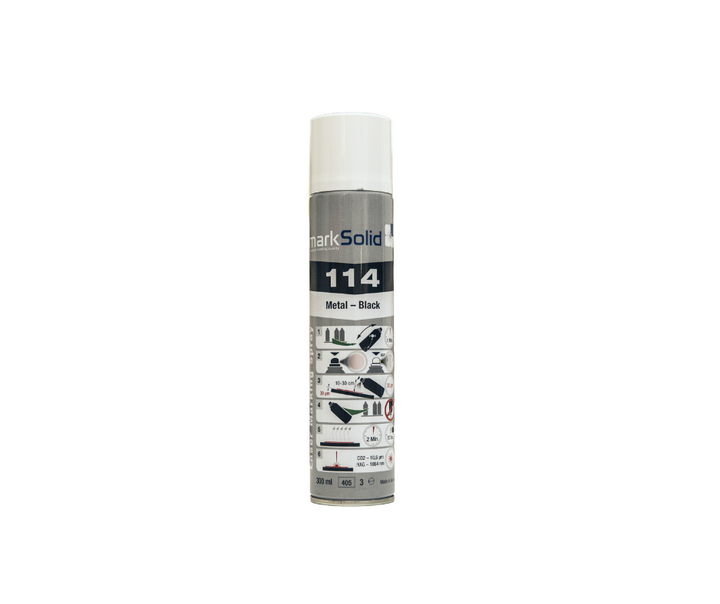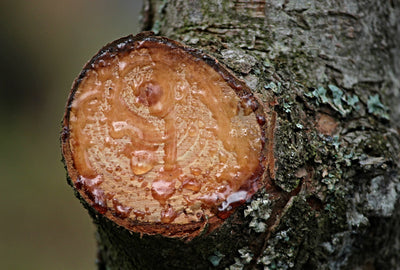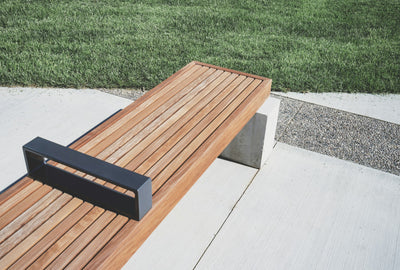We hold stainless steel in our hands more or less consciously every day: pots, cutlery, pipes and railings are examples of this widespread material. Due to the many points of contact in everyday life, we would like to present stainless steel with all its properties and possible uses. We also want to shed light on the widespread myth of the "stainless" property.
As you don't know any different from us, at the end we will go into the design of this valuable material with a certain shine factor with hands-on, creative tips.
What is stainless steel?
Basically, it is a collective term for stainless steel. Since there are different alloys or material compositions, there is no pure form of stainless steel. Here you will learn in 5 minutes of reading time how multifaceted and designable (!) stainless steel is. By definition, it is alloyed steel with a high degree of purity. There are a total of more than 150 types of stainless steel that are described with the property "stainless" . There are some interesting details to follow.
How is stainless steel made?
Nickel, chromium, vanadium and molybdenum are added during steel production or steel smelting, which make the steel "noble" and give it the properties described below.
The steel itself as the basis is obtained from pig iron, which is a compound of iron ore, oxygen and coke, under extremely high heat. The end product presented here represents a refinement of steel. Cobalt, tungsten and titanium can be considered as further components for refinement. Steel is either created in a blast furnace or in an electric furnace, where it can be recycled from old material.
What is stainless steel made of?
Iron, chrome and nickel are mainly used for the production of stainless steel, and you have just got to know other refiners. We can easily identify the components by asking, "What does 18/10 stainless steel mean?" Differentiate: This type of stainless steel, which is very common in households, contains 18% chromium and 10% nickel. The large remainder (about 70%) consists of iron. The components may vary depending on the type of stainless steel and the intended use. But iron will always make up by far the largest part.
What properties does stainless steel have?
Very many types of stainless steel are described as being corrosion-resistant, although from a purely chemical point of view it depends on a sufficiently high chromium content. Aside from this important key property, stainless steel is considered durable, temperature resistant, conductive and hygienic. These properties open up many areas of application, which we will briefly discuss below. It is characteristic that stainless steels do not need any further coating to protect the surface. The surface is more or less shiny, so that this material is also a visual highlight apart from its functionality.
The specific properties of a type of stainless steel depend on the composition of the alloy. Chromium is an important ingredient in improving corrosion resistance, while nickel makes steel more resistant to acids overall. Vanadium improves the workability of stainless steel. You should check the respective material composition with a view to the properties of the stainless steel.
Why doesn't stainless steel rust? - Is that correct?!

Old love literally doesn't rust, and neither does stainless steel, right? This question represents a widespread misconception that is also promoted by advertising claims. If rust were not an issue at all, traces of rust on cutlery in the kitchen, for example, would not stand a chance. The reality is different! Corrosion can also occur with stainless steel. This is always the case when the protective layer of chromium oxide is damaged, thus paving the way for oxidation as the basis for rust.
Rust is an issue since stainless steels are about 70% iron. The desirable rust resistance is only achieved with a protective layer of chromium oxide. If the surface is intact, the risk of rusting is very low. However, with increasing age and signs of wear, even types of stainless steel are not immune to rust. Most of the time, however, this is only a visual and superficial annoyance: the stability of the stainless steel rarely suffers as a result. The higher the chromium content, the better the stainless steel grades are protected against rust.
Stainless steel is particularly susceptible to rust during processing: the protective layer can be damaged during welding or grinding, so that appropriate post-processing can be useful. In the case of finished products such as pots, etc., this has already happened.
What types of stainless steel are there?
In total, there are far more than 100 types of stainless steel that differ in the composition of the alloy. Due to the degree of purity as an essential feature, the following 3 main groups with increasing corrosion resistance can be distinguished:
- Chrome steel: High corrosion resistance of exemplary products such as cutlery and knife blades.
- Chromium-nickel steel: This steel alloy is used e.g. B. for rinsing or drums in washing machines.
- Chromium-manganese steel: This highly corrosion-resistant type of stainless steel is used e.g. B. used for implants, medical devices and jewellery.
Which stainless steel is magnetic?

We have deliberately not mentioned the property magnetic above, as it requires closer examination. When we come to the topic of magnetism , a distinction must be made between ferritic and austenitic steel. Most types of stainless steel that we come into contact with in everyday life are austenitic alloys. These are only slightly magnetic.
Ferritic alloys, on the other hand, contain far less carbon, which inhibits the magnetic effect. Such alloys are sometimes strongly magnetic. If you are still interested in this topic for your creative plans, you should pay attention to this aspect when selecting types of stainless steel.
What can stainless steel be used for?
We have already mentioned many everyday examples so that typical possible uses become clear. In general, this material has a wide range of uses, which is why it is used in many areas. We only want to list the most important areas here, which is why this list should by no means be read as conclusive:
- furniture making
- Vehicle construction.
- Architecture /Construction Industry.
- Mechanical engineering.
- Pharmaceutical and food industry.
This list already indicates the economic benefit of this material. Above all, the acid resistance and the high resistance to corrosion predestine stainless steel types for use in the food industry and in house construction. In the pharmaceutical and food industry, it is particularly important to be able to use it hygienically.
Of course, you can also use stainless steel creatively for your DIY ideas in combination with our Mr Beam laser cutter. Let's turn to that perspective in the final section of this guide.
How can stainless steel be processed?

Industrial processing mainly involves grinding, polishing and brushing. Another, less well-known processing method is the so-called buffing, which makes the surface smoother and shinier. Depending on the processing, more or less surface is removed. It goes without saying that special equipment is required given the thickness of the material. And here we have already arrived at drilling, another possible form of final machining.
Which drill is suitable for stainless steel?

If a decorative object made of this material is to be fixed to the wall, a suitable drill is essential. Everything else will lead to agony, or you will not reach your goal!
Just! Before you search in the basement, you should specify the requirements for drills here. You are processing a relatively hard material, so only type H drills are suitable. Most of the time, you will use drills of the HSS type (high-performance cutting steel). The point angle should be around 135 degrees as a criterion for selecting the drill. If the angle is well below 130 degrees, it could become more difficult or the end result could leave something to be desired.
How can stainless steel be engraved? We'll show you how it's done!

Before you want to provide a stainless steel creation with a drill hole, you will certainly first look for other design and customization options. With such a smooth and shiny surface, engraving is a good idea. With the Mr Beam laser cutter, you can engrave or mark stainless steel effortlessly and with an appealing precision.
Get to work on stainless steel with the Mr Beam laser cutter!
All you need is your ready-to-use Mr Beam and marksolid laser marking spray. Spray the precious metal piece with the spray as a pre-treatment and let it dry. Then you have creative freedom with the Mr Beam laser cutter when engraving.
In contrast to anodized aluminum, this DIY project does not remove any material, but instead engraves a solid coating (similar to stainless steel enamelling). Thanks to this guide, you now know that this is very good news when it comes to the corrosion resistance and thus longevity of your product.






